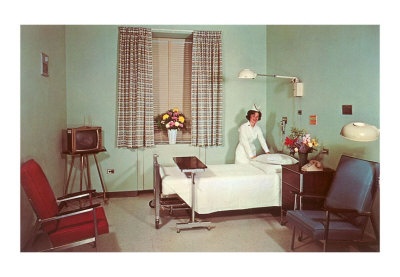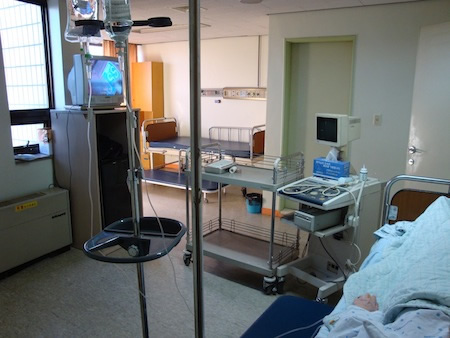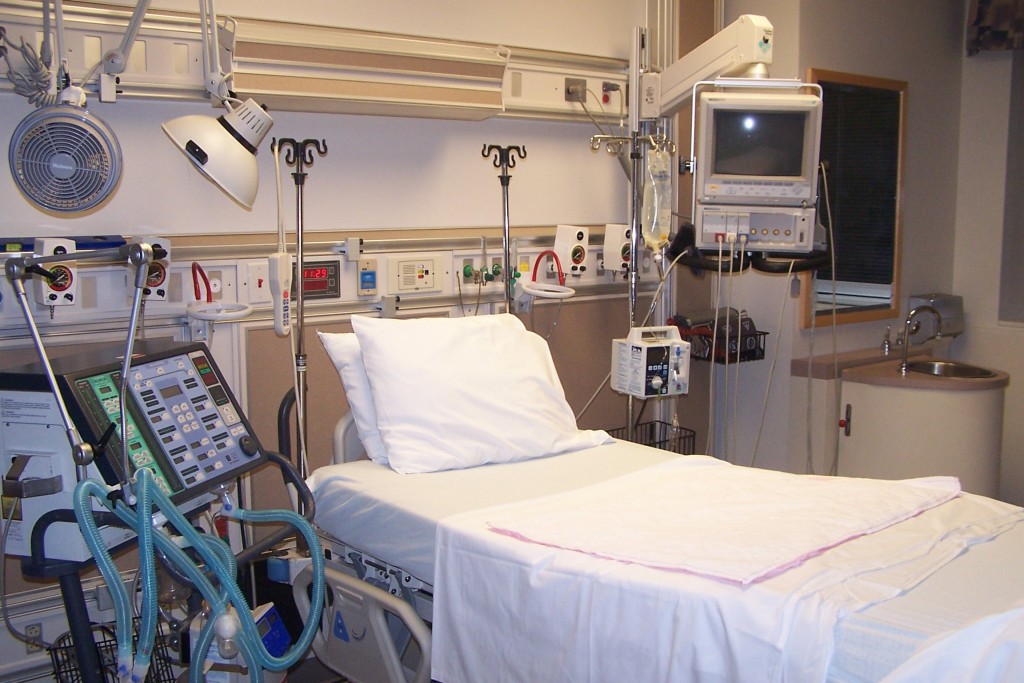Medical care in America — humane, patient centered, and amazingly sophisticated

On Monday, the surgeon told me that I needed to decide immediately whether my mother should have surgery to relieve pressure from a bleed on the brain. Time was of the essence, because the pressure was building so quickly she could die within the hour.
As I’ve mentioned in previous posts, the decision was an easy one — my mother wants to live, she’s otherwise in good health, and the surgery, while risky, would most probably have a good outcome. I said yes and that was that — the hospital staff instantly swung into gear and my mother was in the OR within 30 minutes. Since the surgery, she’s been cared for in the ICU. This leads me to a couple of comments.
First, I am incredibly grateful that my Mom still lives in a world in which the patient and the family can make decisions about health care. Mother Jones, applauding the California legislature’s decision to grant patients a right to physician assisted suicide, was certain that the only real problem with the bill was that it failed to protect the dying from venal relatives (emphasis in original):
Brown might also feel that the bill’s safeguards against abuse still aren’t sufficient:
In spite of the bill’s provision about coercion, Dr. Aaron Kheriaty, director of the medical ethics program at the University of California, Irvine, School of Medicine, said that low-income and underinsured patients would inevitably feel pressure from family members to end their own lives in some cases, when the cost of continued treatment would be astronomical compared with the cost of a few lethal pills.
He pointed to a case in Oregon involving Barbara Wagner, a cancer patient who said that her insurance plan had refused to cover an expensive treatment but did offer to pay for “physician aid in dying.”
“As soon as this is introduced, it immediately becomes the cheapest and most expedient way to deal with complicated end-of-life situations,” Dr. Kheriaty said. “You’re seeing the push for assisted suicide from generally white, upper-middle-class people, who are least likely to be pressured. You’re not seeing support from the underinsured and economically marginalized. Those people want access to better health care.”
In other words, for the Left, every patient’s worst enemy is his or her own family. Reality, however, shows the opposite to be true. Barring statistical outliers, most people love their family members and want them to live, not to die. They don’t place an actuarial value on their family member’s life, they place a love, affection, duty, and moral value on that life.
What experience shows us is that, when it comes to making decisions about a person’s care (what to give, what to withhold), it’s the government that places an actuarial value on people. It decides that people are too sick or too old to be worth treating.
I have no doubt that, were my 92-year-old mother living under a socialized medicine regimen, I would already have buried her a couple of days ago. After all, we know that in England, the mother land of socialized medicine, the government both explicitly and implicitly refuses to treat old or sick people. Other countries with nationalized medicine do the same, although socialized medicine’s supporters try to dress this up as altruism, rather than cost-saving.
The reality is that I care about my mother, whereas a government actuary does not. I see her as a fully realized human being with a lust for life. The actuary sees her as an aged person with a history of falls. I want her alive; the actuary wants her to be less expensive. I love her; the state does not.
The other point I want to make is about the care Mom’s receiving in the ICU. Before I get to a substantive discussion, though, I have to give unqualified praise to Marin General for her ICU care. The ICU facility is lovely and every member of the staff is a star — they are all kind, attentive, efficient, and extremely skilled. They treat my mother as a person who needs tender loving care, rather than an old, difficult body occupying one of their beds.
And that leads me to the substantive point, which is that the care she gets is amazing: she’s in a state-of-the-art bed, designed especially to avoid bedsores. She’s hooked up to state-of-the-art machines that monitor all of her functions, which are watched over by a contract service in San Francisco that hires people to keep an eagle eye monitors all day long. She’s given state-of-the-art medicine to manage her pain and control her various age related health problems. In the 1950s, when American medicine was cheaper, none of this would have existed.
As long-time readers know, I believe that part of why American medicine is so costly is because we have too many middle men between the patient and the provider: the person who needs care doesn’t negotiate costs with the provider, nor does he or she shop around. There are, for example, two hospitals within a 10 mile radius of my Mom’s home, and three hospitals if you go out 16 miles.
Thanks to employer-provided health insurance, too many prices are fixed, and the negotiations too often take place between people who have no skin in the game. This is the same problem, of course, that we see in public sector unions, where the only person missing from the negotiation is the taxpayer, who actually foots the bill.
But the other reason American medicine is so costly is because it’s so damn good. In 1950, a hospital room looked like this:
It’s very pretty, with its lights, chairs, and television, but you’ll notice the singular lack of anything remotely related to health care, except for that pretty, smart-looking nurse. Nowadays, though, the average hospital room looks like this:
That room is a miracle of technology and efficiency. It’s not pretty, but everything in it is dedicated to improving the patient’s outcome. The average ICU room (which looks very similar to the one in which Mom is currently housed) is even more highly outfitted:
This is what we, as Americans have come to expect from our hospital care, but there’s no way it can come cheap. The same is true for all the medicines we use today from those much reviled pharmacies. We have pharmaceutical treatments today — arrived at very expensively, thanks to research and development, plus the endless FDA process — that doctors in the past hadn’t even begun to imagine could exist. That too doesn’t come cheap.
In other words, our care today is more expensive than it was in the past because it’s better than it was in the past. If we want past prices, we have to expect past care.
I continue to believe that some reasonable government oversight, combined with a free market, is the single best way to lower costs in an industry that has made extraordinary strides in the past 60 years, strides that should be celebrated, not reviled as the domain of greedy capitalists.



